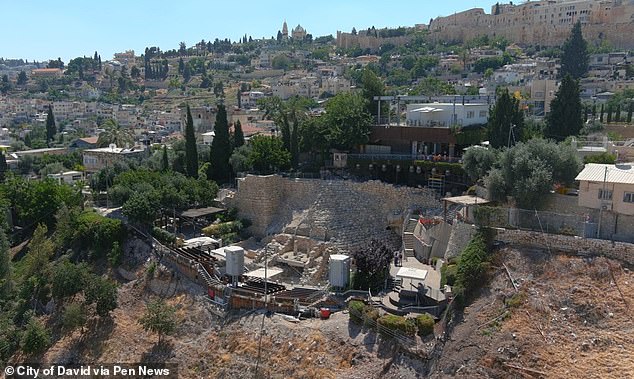A scientific breakthrough has exposed the truth about a site in ancient Jerusalem, overturning expert opinion and vindicating the Bible’s account.
Until now, experts believed that a stretch of wall in the original heart of the city was built by Hezekiah, king of Judah, whose reign spanned the 7th and 8th centuries BC.
It had seen its northern neighbors, the Kingdom of Israel, destroyed by the Assyrian Empire, and was thought to have built the wall to defend itself against the invaders.
But now, a nearly decade-long study has revealed that it was built by his great-grandfather, Uzziah, after a major earthquake, echoing the Bible account.
The wall is in the City of David, the historic archaeological site that formed the original city of Jerusalem, according to the Bible.
The section of wall, on the eastern slope of the City of David, was long supposed to have been built by Hezekiah, king of Judah.
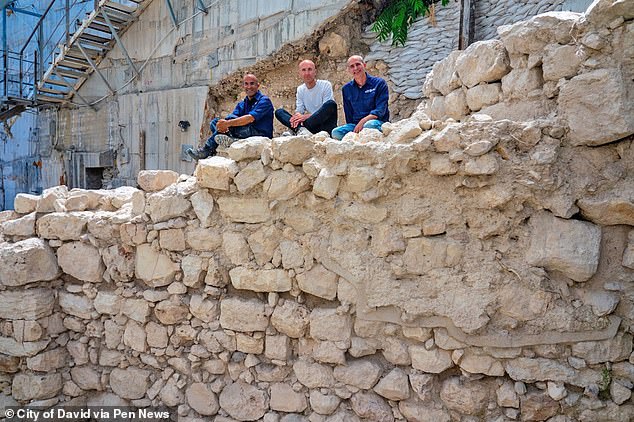
A nearly decade-long study has revealed that it was built by his great-grandfather, Uzziah, after a major earthquake, echoing the Bible account.
Joe Uziel of the Israel Antiquities Authority (IAA) said: “For decades, it was assumed that this wall was built by Hezekiah, king of Judah.
‘But it is now becoming clear that it dates back to the days of King Uzziah, as hinted at in the Bible.
‘Until now, many researchers assumed that the wall was built by Hezekiah during his rebellion against Sennacherib, king of Assyria, to defend Jerusalem during the Assyrian siege.
“It is now evident that the wall in its eastern part, in the area of the City of David, was built earlier, shortly after the great Jerusalem earthquake, and as part of the construction of the city.”
The Old Testament describes the construction in the Second Book of Chronicles.
It says, “Uzziah built towers in Jerusalem at the Corner Gate, at the Valley Gate, and at the corner of the wall, and fortified them.”
Scripture also bears witness to seismic activity: the Old Testament Book of Amos dates from “two years before the earthquake, when Uzziah was king of Judah.”
The study, a joint project between the IAA, Tel Aviv University and the Weizmann Institute of Science, revealed the provenance of the ancient wall through carbon-14 dating.
Also known as radiocarbon dating, this technique uses the decay of a radioactive isotope of carbon (14C) to measure the time and date of objects containing carbon-containing material.
According to the IAA, this period in history was previously considered a “black hole” for carbon-14 dating, due to fluctuating levels of the isotope in the atmosphere at the time.


Until now, experts believed that a stretch of wall in the original heart of the city was built by Hezekiah, king of Judah (left). But the study has revealed that it was built by his great-grandfather Uzziah (left) after a major earthquake.
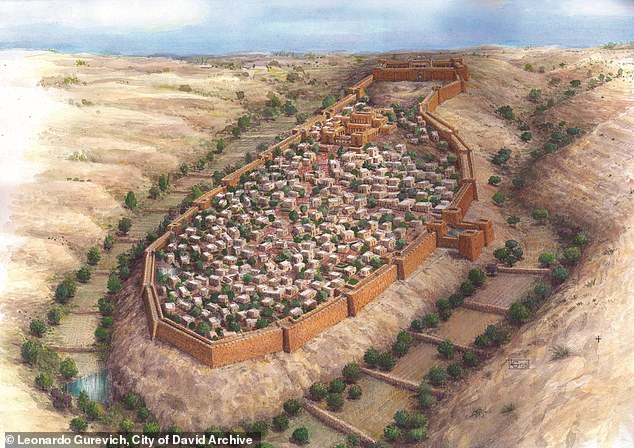
Illustration of the First Temple period city fortification built in the days of King Uzziah, around 783 to 742 BC
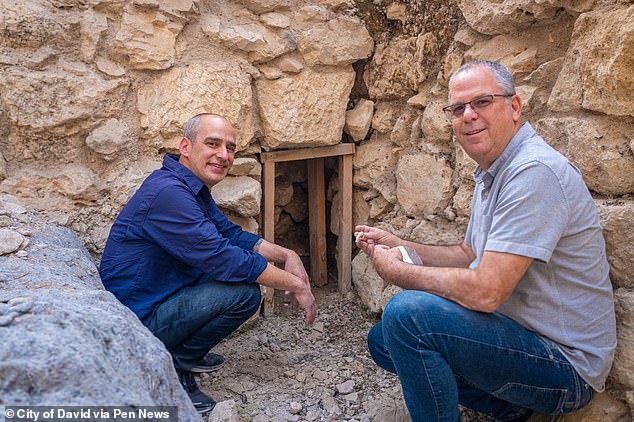
Pictured are Dr. Joe Uziel of the Israel Antiquities Authority (left) and Professor Yuval Gadot of Tel Aviv University.
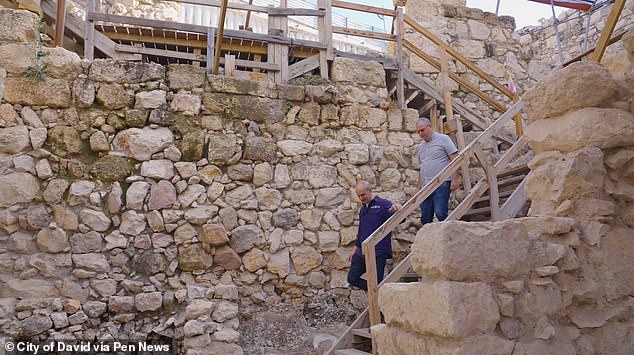
The wall unearthed in the City of David was not built in the time of Hezekiah as part of the preparations for the Assyrian siege, but earlier, in the time of King Uzziah, after the earthquake that occurred in Jerusalem.
But using ancient tree rings from Europe, scientists were able to chart these fluctuations year after year.
Elisabetta Boaretto of the Weizmann Institute said: ‘The C-14 resolution was very bad: 200-300 years; It was impossible to distinguish anything else.
“With the work we’ve done in the City of David, we were able to reach a resolution in less than 10 years, which is really something very, very new and dramatic.”
The scientists sampled organic artifacts found at four different excavation sites in the ancient heart of Jerusalem, sometimes called the City of David.
Among them were grape seeds, date bones and even bat skeletons.
They were all cleaned, converted to graphite and then placed in a particle accelerator at speeds of 3,000 kilometers per second to separate the carbon-14 from other organic materials.
Carbon measurement then revealed the true age of the sample.
Yuval Gadot of Tel Aviv University said the method had also set back the city’s westward expansion by five generations.
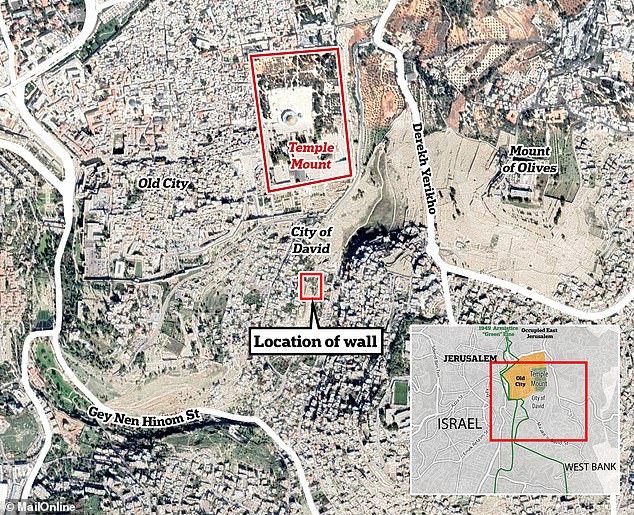
The wall is in the City of David, the historic archaeological site that formed the original city of Jerusalem, according to the Bible.
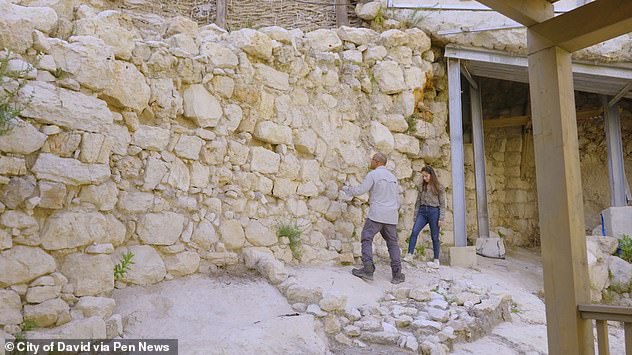
Researchers have managed to link, through “exact science”, the events mentioned in the Bible with archaeological finds discovered in the city of David.
He said: ‘So far, most researchers have linked the growth of Jerusalem towards the west, with the period of King Hezekiah, just over 2,700 years ago.
‘The conventional assumption to date has been that the city expanded due to the arrival of refugees from the Kingdom of Israel to the north, following the Assyrian exile.
‘However, the new finds reinforce the view that Jerusalem grew in size and spread towards Mount Zion as early as the 9th century BC.
‘This was during the reign of King Joash, a hundred years before the Assyrian exile.
“In light of this, the new research teaches that the expansion of Jerusalem is the result of Judea’s internal population growth and the establishment of political and economic systems.”

The research presents more than 100 radiocarbon dates taken from four different excavation areas throughout the City of David. These dates were obtained by sampling organic finds such as grape seeds, date pits, and even bat skeletons found in one of the structures. They were all cleaned, converted to graphite and then placed in a particle accelerator at speeds of 3,000 kilometers per second to separate the carbon-14 from other organic materials.
What’s more, it shows that the city was larger than previously thought during the reigns of David and Solomon.
Dr Uziel said: “During the 10th century BC, the days of David and Solomon, this research has shown that the city was occupied in different areas and appears to have been larger than we previously thought.
“We can identify specific buildings and relate them to specific kings mentioned in the biblical text.”
The Kingdom of Judah would last until 587 BC. C., when the Babylonians besieged and destroyed their capital, Jerusalem, along with Solomon’s Temple, often called the First Temple.


